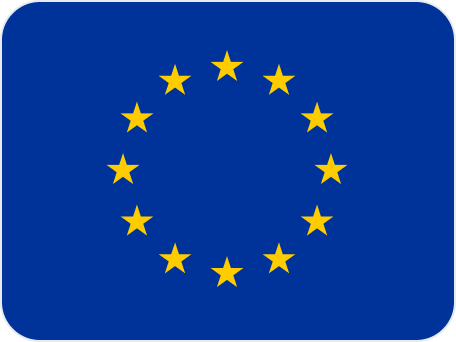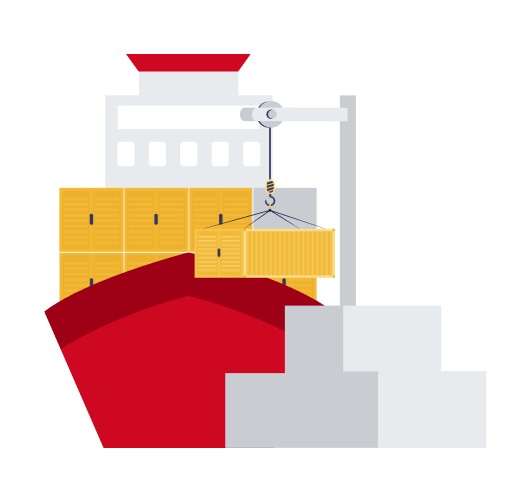Details for Negotiating FTA


Philippines-EU FTA
Philippines-EU Free Trade Agreement
The Significance of the Agreement
Agreement Overview
The Philippines-EU Free Trade Agreement (FTA) aims to enhance economic cooperation and reduce trade barriers between the Philippines and the European Union (EU). The EU consists of 27 member countries, making it one of the largest economic blocs in the world. This agreement seeks to promote the exchange of goods, services, and investments by granting preferential access, ultimately fostering closer economic ties and boosting bilateral trade and investment.
Key Benefits

Reducing tariff and non-tariff barriers to facilitate trade between the Philippines and the EU.

Encouraging bilateral investments through investment protection and promotion clauses.

Stimulating economic growth and creating jobs in both regions.

Providing better market access for Philippine products in the EU and vice versa.

Enhancing the competitiveness of businesses in both regions through improved market access and reduced trade costs.
Expected Effects
- Increased
Exports - Investment
Inflow - Strengthened
Economic
Ties
-
Increased Exports
Expanding the market for Philippine agricultural products, seafood, and electronic goods in the EU.
-
Investment Inflow
Encouraging EU technology and financial services to invest in the Philippines.
-
Strengthened Economic Ties
Enhancing mutual economic ties and fostering sustainable growth.
The Significance of the Agreement Signing
The launch of the Philippines-EU FTA negotiations in 2015 represents a significant milestone in bilateral economic relations. The key significances are:
Enhanced Interregional Relations
The FTA negotiations promote stronger economic ties between the Philippines and the EU, facilitating closer cooperation in various sectors. This strengthens diplomatic relations and opens new avenues for collaboration.
Economic Diversification
The agreement supports economic diversification by encouraging trade and investment in a broader range of sectors, reducing dependence on traditional markets, and enhancing economic resilience.
Market Expansion
By negotiating preferential access, both regions can expand their markets and create new opportunities for exporters and investors, leading to increased economic activity and job creation.
Support for SMEs
The FTA negotiations aim to provide small and medium-sized enterprises (SMEs) in both regions with better access to each other’s markets. This supports the growth and development of SMEs, fostering inclusivity and diversity in the economy.
Regional Economic Integration
The agreement contributes to regional economic integration by strengthening economic linkages between Southeast Asia and Europe, promoting stability, and encouraging cooperation within and between the regions.
Importance of Target Country Markets in the Agreement
Overview of the European Union
The European Union is one of the largest and most advanced economic regions in the world, consisting of 27 member countries. The EU offers significant market opportunities for Philippine products and services due to its high purchasing power and demand for high-quality goods.
Economic Significance
- i. Large Consumer Market: The EU has a combined population of over 450 million people, creating a substantial consumer market.
- ii. High Purchasing Power: EU consumers have high disposable incomes, driving demand for diverse products and services.
- iii. Technological Advancement: The EU is a global leader in technology and innovation, offering opportunities for technology transfer and collaboration.
Major Industries and Trade Items
Automobiles, machinery, pharmaceuticals, and chemicals.
Finance, insurance, and information technology.
Wine, cheese, meats, and grains.
Implementation Schedule of the Agreement (Proposed)
Partner Country Information
Country Overview and Economic Trends

-
Headquarters
Brussels, Belgium
-
Language
24 official languages, including English, French, German, and Spanish
-
Population
Approximately 450 million
-
Economy
Highly developed and diverse, major industries include manufacturing, agriculture, and services
-
Trade
In 2023, trade volume with the Philippines was approximately $18 billion, with major Philippine exports being electronic products, seafood, and agricultural products, and major imports being machinery, automobiles, and chemicals.
Trade and Investment Opportunities
-
Trade Opportunities
The EU offers substantial potential for Philippine exports of electronic products, agricultural products, and seafood.
-
Electronic Products
Philippine electronic components and appliances have high demand in the EU market.
-
Agricultural Products
Philippine mangoes, bananas, and other agricultural products are popular among EU consumers.
-
Seafood
High demand for Philippine tuna, shrimp, and other seafood in the EU's food market.
-
Investment Opportunities
There are numerous opportunities for Philippine companies to invest in the EU's technology, manufacturing, and service sectors.
-
Technology
Philippine IT companies can collaborate with EU tech firms to enhance competitiveness in the global market.
-
Manufacturing
Philippine manufacturing companies can leverage the EU's advanced manufacturing technology to improve production efficiency.
-
Services
Philippine service companies can enter the EU market to provide a range of services, including business process outsourcing (BPO) and financial services.


Philippines-UAE CEPA
Philippines-UAE Comprehensive Economic Partnership Agreement
The Significance of the Agreement
Agreement Overview
The Philippines-United Arab Emirates (UAE) Comprehensive Economic Partnership Agreement (CEPA) is set to become the Philippines' first trade agreement with a Gulf Cooperation Council (GCC) member, aimed at strengthening economic cooperation between the Philippines, the UAE, and the broader Gulf region. The CEPA will promote increased trade in goods and services, enhance investment flows, and create opportunities for professionals and service providers. It will also facilitate deeper collaboration in areas of mutual interest, positioning the agreement as a comprehensive partnership for economic growth.
Key Benefits

The CEPA aims to achieve at least 90% liberalization in tariff lines and trade value, removing or reducing tariffs and creating greater market access between the Philippines and the UAE.

Attracting more investments from both parties by promoting a stable, predictable, and transparent business environment.

Enhancing opportunities for Philippine exporters, professionals, and service providers, particularly in sectors like information and communication technology (ICT), construction, tourism, and financial services.

The CEPA will serve as a gateway for the Philippines to enter the wider GCC market, positioning the Philippines to leverage UAE's strategic location in global trade routes.

The agreement will support cooperation in emerging areas such as digital trade, MSMEs, labor protection, intellectual property, competition, and environmental sustainability.
Expected Effects
- Increased
Exports - Investment
Inflow - Strengthened
Economic
Ties
-
Increased Exports
By eliminating tariffs on key products such as agricultural goods, electronics, and processed foods, the Philippines will have improved access to the UAE market.
-
Investment Inflow
The agreement will boost investments in priority sectors such as infrastructure, renewable energy, and ICT.
-
Strengthened Economic Ties
The CEPA will foster closer economic collaboration and trade exchanges between the Philippines and the UAE, providing long-term growth benefits.
The Significance of the Agreement Launch
The launch of the CEPA negotiations signifies a critical milestone in the Philippines’ efforts to expand its trade network in the Middle East. As an entry point into the Gulf region, the CEPA provides the Philippines with access to new markets, promoting economic growth and enhancing bilateral ties with the UAE.
Enhanced Bilateral Relations
The CEPA serves as a stepping stone to deepen economic ties between the Philippines and the UAE, building on existing agreements like the Investment Promotion and Protection Agreement (IPPA) and the Memorandum of Understanding (MOU) on Economic and Technical Cooperation.
Gateway to GCC Markets
The UAE, as a member of the GCC, provides a strategic entry point to the larger Gulf region. Through the CEPA, the Philippines can access a combined market of over 3.5 billion people across Asia, the Middle East, Africa, and Europe.
Regional Economic Integration
The CEPA contributes to broader economic integration between Southeast Asia and the Middle East, reinforcing economic collaboration, trade expansion, and regional stability.
Importance of Target Country Markets in the Agreement
Overview of UAE
The UAE is one of the wealthiest economies in the Middle East, with significant growth potential across various industries. With a population of approximately 10 million, including the second-largest Filipino expatriate community in the Middle East, the UAE presents vast market opportunities for Philippine products and services.
Economic Diversification
-
Strategic Location
The UAE is located at the crossroads of major global trade routes, making it a key hub for trade between Asia, Europe, and Africa.
-
Diversified Economy
While the UAE is known for its oil and gas exports, it has diversified into other sectors such as finance, tourism, logistics, and real estate.
-
High Consumer Demand
The UAE’s affluent population and strong demand for consumer goods create a lucrative market for Philippine exports.
Major Industries and Trade Items
The UAE is a leader in the ICT sector, providing opportunities for Filipino tech firms to offer services in digital trade and innovation.
The UAE’s booming construction sector, driven by major infrastructure projects, offers investment opportunities for Filipino companies in construction technologies and building materials.
The UAE imports a significant amount of agricultural goods, and Philippine exporters of fruits, seafood, and processed foods are well-positioned to benefit from tariff reductions under the CEPA.
Implementation Schedule of the Agreement
February Joint Statement signed by both parties affirming the intent to negotiate the CEPA.
December Terms of Reference (TOR) signed in Dubai, marking the formal start of negotiations.
End of Expected conclusion of the CEPA negotiations, coinciding with the 50th anniversary of PH-UAE bilateral relations.
Partner Country Information
Country Overview and Economic Trends

-
Capital
Abu Dhabi
-
Language
Arabic
-
Population
Approximately 10 million
-
Economy
Diversified economy, with strengths in oil and gas, tourism, logistics, and finance.
-
Trade
In 2023, trade volume between the Philippines and the UAE was approximately $342 million, with key Philippine exports including electronics, agricultural products, and processed foods.
Trade and Investment Opportunities
-
Trade Opportunities
The UAE offers significant market potential for Philippine exports of electronics, processed foods, and agricultural products.
-
Electronics
High demand for electronic goods in the UAE provides export opportunities for Filipino manufacturers.
-
Agricultural Products
Filipino exporters of fresh and processed food products can benefit from the reduction or elimination of tariffs on key goods.
-
Services
Philippine service providers in sectors such as ICT, finance, and real estate are well-positioned to capitalize on growing demand in the UAE market.
-
Investment Opportunities
Opportunities for investment in the UAE include real estate, construction, and renewable energy sectors. Filipino businesses can explore joint ventures and partnerships in these high-growth areas.


Philippines-India PTA
Philippines-India Preferential Trade Agreement
The Significance of the Agreement
Agreement Overview
The India-Philippines Preferential Trade Agreement (PTA) aims to enhance economic cooperation and reduce trade barriers between India and the Philippines. This agreement seeks to promote the exchange of goods and services by granting preferential access to specific products, ultimately fostering closer economic ties and boosting bilateral trade and investment.
Key Benefits

Reducing tariff barriers to facilitate trade between India and the Philippines.

Encouraging bilateral investments through preferential treatment and investment protection clauses.

Stimulating economic growth and creating jobs in both countries.

Providing better market access for Philippine products in India and vice versa.

Enhancing the competitiveness of businesses in both countries through improved market access and reduced trade costs.
Expected Effects
- Increased
Exports - Investment
Inflow - Strengthened
Economic
Ties
-
Increased Exports
Expanding the market for Philippine agricultural products, seafood, and electronic goods in India.
-
Investment Inflow
Encouraging Indian technology and financial services to invest in the Philippines.
-
Strengthened Economic Ties
Enhancing mutual economic ties and fostering sustainable growth.
The Significance of the Agreement Signing
The negotiations for the India-Philippines PTA represent a significant step towards deepening bilateral economic relations. The key significances are:
Enhanced Bilateral Relations
The PTA negotiations promote stronger economic ties between India and the Philippines, facilitating closer cooperation in various sectors. This strengthens diplomatic relations and opens new avenues for collaboration.
Economic Diversification
The agreement supports economic diversification by encouraging trade and investment in a broader range of sectors, reducing dependence on traditional markets, and enhancing economic resilience.
Market Expansion
By negotiating preferential access, both countries can expand their markets and create new opportunities for exporters and investors, leading to increased economic activity and job creation.
Support for SMEs
The PTA negotiations aim to provide small and medium-sized enterprises (SMEs) in both countries with better access to each other's markets. This supports the growth and development of SMEs, fostering inclusivity and diversity in the economy.
Regional Economic Integration
The agreement contributes to regional economic integration by strengthening economic linkages between South Asia and Southeast Asia, promoting stability, and encouraging cooperation within the region.
Importance of Target Country Markets in the Agreement
Overview of India
India is the second most populous country in the world with a rapidly growing economy. India has high growth potential in various industrial sectors, providing significant market opportunities for Philippine businesses.
Economic Significance
- i. Large Consumer Market: India has a vast consumer market based on its large population.
- ii. Industrial Diversity: India is competitive in various industries such as IT, manufacturing, and agriculture.
- iii. Economic Growth: India has a high economic growth rate and aims for sustainable development.
Major Industries and Trade Items
India is a global IT hub with strengths in software development and IT services.
India is competitive in the automotive, chemical, and steel industries.
India is a leading producer of rice, wheat, and sugar.
Implementation Schedule of the Agreement
Partner Country Information
Country Overview and Economic Trends

-
Capital
New Delhi
-
Language
Hindi, English
-
Population
Approximately 1.38 billion
-
Economy
Diverse industries and high growth potential, major industries include IT, manufacturing, agriculture
-
Trade
In 2023, trade volume with the Philippines was approximately $12 billion, with major Philippine exports being electronic products, seafood, and agricultural products, and major imports being chemicals, machinery, and pharmaceuticals.
Trade and Investment Opportunities
-
Trade Opportunities
India offers substantial potential for Philippine exports of electronic products, agricultural products, and seafood.
-
Electronic Products
Philippine electronic components and appliances have high demand in the Indian market.
-
Agricultural Products
Philippine mangoes, bananas, and other agricultural products are popular among Indian consumers.
-
Seafood
High demand for Philippine tuna, shrimp, and other seafood in India's food market.
-
Investment Opportunities
There are numerous opportunities for Philippine companies to invest in India's IT services, manufacturing, and agriculture sectors.
-
IT Services
Philippine IT companies can collaborate with India's IT hubs to enhance competitiveness in the global IT services market.
-
Manufacturing
Philippine manufacturing companies can leverage India's abundant labor and resources to reduce production costs.
-
Agriculture
Philippine agricultural companies can collaborate with India's agricultural technology to improve productivity.


ASEAN-Canada FTA
ASEAN-Canada Free Trade Agreement
The Significance of the Agreement
Agreement Overview
The ASEAN-Canada Free Trade Agreement (ASEAN-Canada FTA) aims to enhance economic cooperation and reduce trade barriers between the 10 ASEAN member countries (Brunei, Cambodia, Indonesia, Laos, Malaysia, Myanmar, the Philippines, Singapore, Thailand, Vietnam) and Canada. This agreement seeks to promote the exchange of goods, services, and investments by granting preferential access, ultimately fostering closer economic ties and boosting bilateral trade and investment.
Key Benefits

Reducing tariff and non-tariff barriers to facilitate trade between ASEAN countries and Canada.

Encouraging bilateral investments through investment protection and promotion clauses.

Stimulating economic growth and creating jobs in both regions.

Providing better market access for ASEAN products in Canada and vice versa.

Enhancing the competitiveness of businesses in both regions through improved market access and reduced trade costs.
Expected Effects
- Increased
Exports - Investment
Inflow - Strengthened
Economic
Ties
-
Increased Exports
Expanding the market for Philippine agricultural products, seafood, and electronic goods in Canada.
-
Investment Inflow
Encouraging Canadian technology and financial services to invest in the Philippines.
-
Strengthened Economic Ties
Enhancing mutual economic ties and fostering sustainable growth.
The Significance of the Agreement Signing
The signing of the ASEAN-Canada FTA represents a significant milestone in regional and bilateral economic relations. The key significances are:
Deepened Economic Integration
The PTA negotiations promote stronger economic ties between India and the Philippines, facilitating closer cooperation in various sectors. This strengthens diplomatic relations and opens new avenues for collaboration.
Strengthened Global Economic Order
ASEAN-Canada FTA strengthens the multilateral trading system and counteracts protectionist tendencies, creating a free and fair trade environment. This stabilizes the global economic order and helps both regions maintain competitiveness in the global market.
Enhanced Human Resource Development
ASEAN-Canada FTA supports human resource development through various programs, including training and educational exchanges. This improves skills and capacities in both regions, contributing to long-term economic growth.
Support for SMEs
ASEAN-Canada FTA expands opportunities for small and medium-sized enterprises (SMEs) to access new markets and participate in international trade. This promotes the growth and development of SMEs and increases inclusivity and diversity in both economies.
Financial Services Promotion
ASEAN-Canada FTA supports the growth of financial services by opening financial markets and relaxing regulations. This helps both regions enhance economic competitiveness through financial technology innovation.
Importance of Target Country Markets in the Agreement
Overview of Canada
Canada is one of the largest economies in the world, known for its advanced technology, diverse industries, and high purchasing power. Canada offers significant market opportunities for Philippine products and services due to its stable economy and demand for high-quality goods.
Economic Significance
- i. Large Consumer Market: Canada has a vast consumer market with high purchasing power.
- ii. Technological Advancement: Canada is a global leader in technology and innovation.
- iii. Economic Stability: Canada has a stable and growing economy with significant growth potential in various sectors.
Major Industries and Trade Items
Canada is rich in natural resources, including oil, gas, minerals, and forestry products.
Canada has a strong technology sector, including IT, telecommunications, and biotechnology.
Canada is a major producer of agricultural products, including wheat, canola, and dairy.
Implementation Schedule of the Agreement
Partner Country Information
Country Overview and Economic Trends

-
Capital
Ottawa
-
Language
English, French
-
Population
Approximately 38 million
-
Economy
Highly developed and diverse, major industries include natural resources, technology, and agriculture
-
Trade
In 2023, trade volume with the Philippines was approximately $2 billion, with major Philippine exports being electronic products, seafood, and agricultural products, and major imports being machinery, chemicals, and technology products.
Trade and Investment Opportunities
-
Trade Opportunities
Canada offers substantial potential for Philippine exports of electronic products, agricultural products, and seafood.
-
Electronic Products
Philippine electronic components and appliances have high demand in the Canadian market.
-
Agricultural Products
Philippine mangoes, bananas, and other agricultural products are popular among Canadian consumers.
-
Seafood
High demand for Philippine tuna, shrimp, and other seafood in Canada's food market.
-
Investment Opportunities
There are numerous opportunities for Philippine companies to invest in Canada's technology, natural resources, and service sectors.
-
Technology
Philippine IT companies can collaborate with Canadian tech firms to enhance competitiveness in the global market.
-
Natural Resources
Philippine companies can participate in Canada's natural resource extraction and processing industries.
-
Service
Philippine service companies can enter the Canadian market to provide a range of services, including business process outsourcing (BPO) and financial services.







